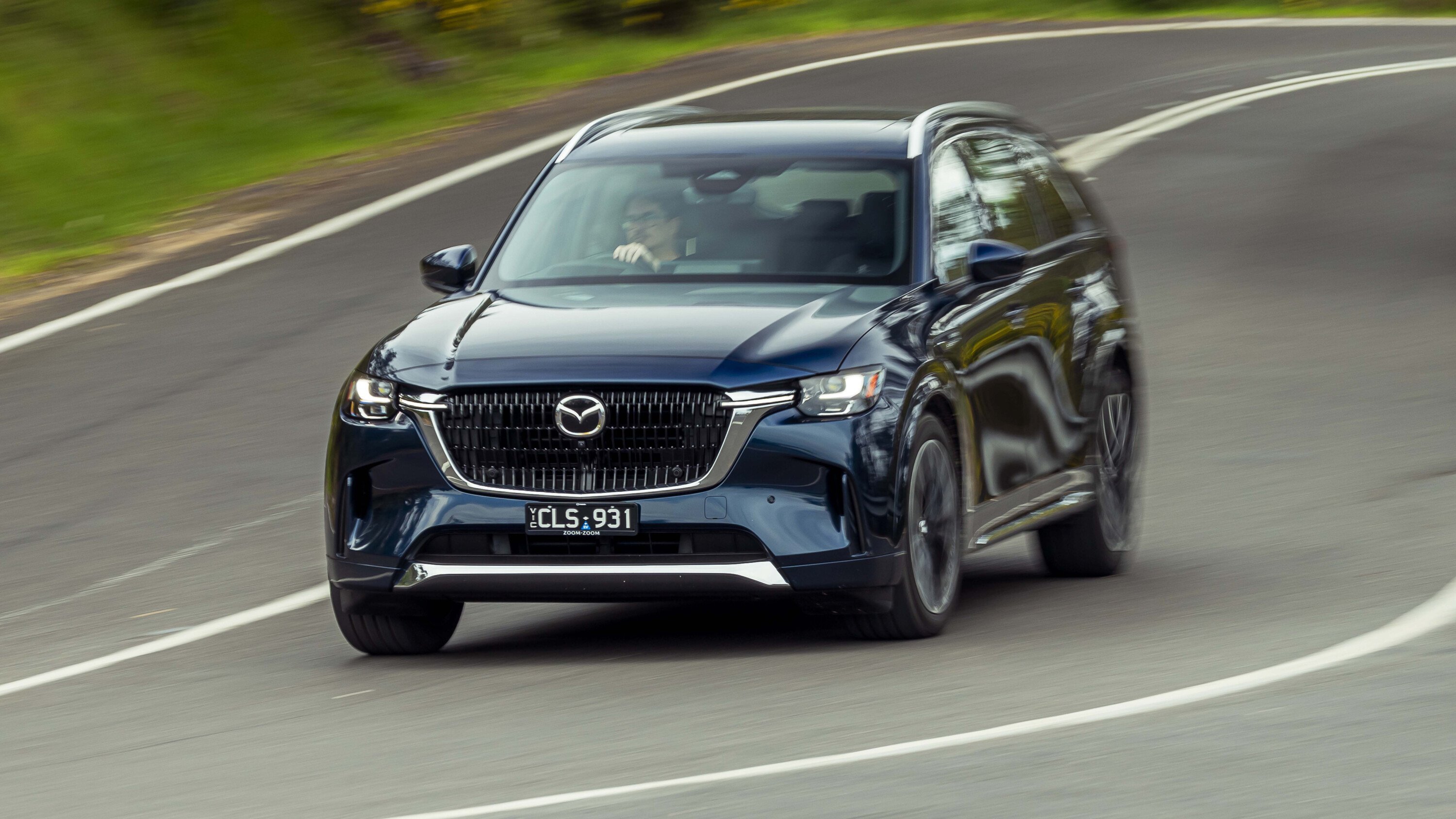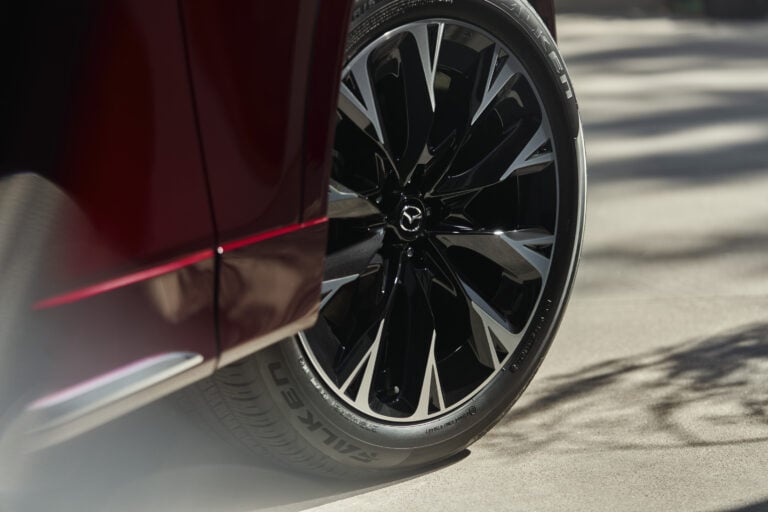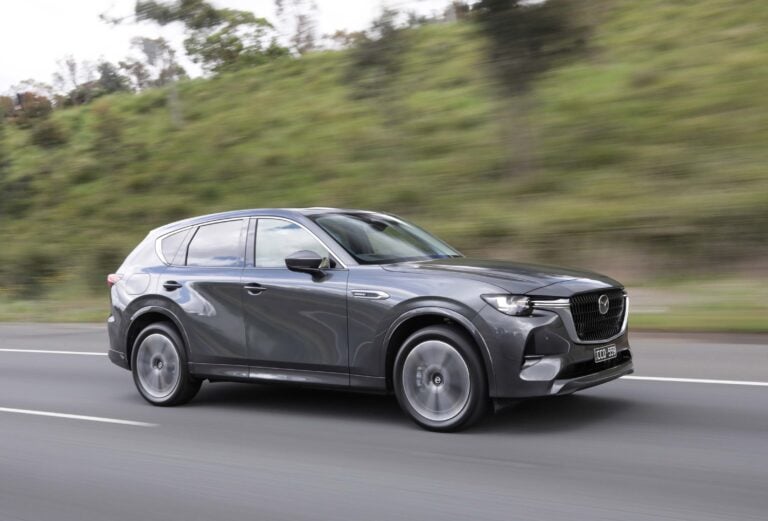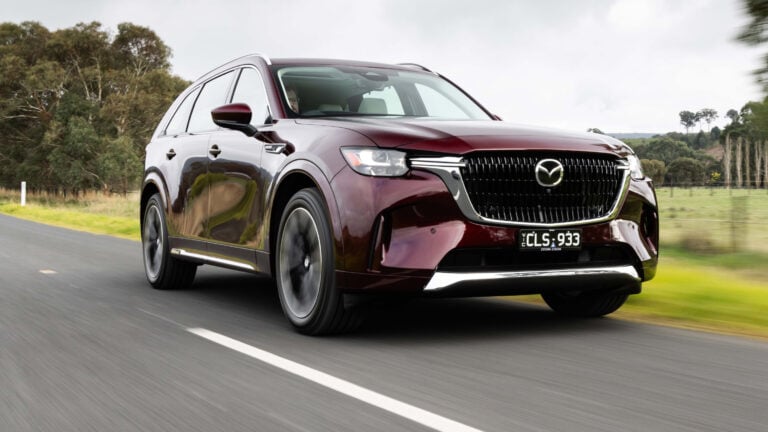What you need to know up front: The CX-60 and CX-70 are five-seat models, while the CX-80 and CX-90 have six or seven seats.
Mazda has acknowledged “some overlap” in its decision to sell the CX-60, CX-70, CX-80 and CX-90 medium-to-large SUV models in Australia.
Mazda Australia managing director Vinesh Bhindi admitted that while the cars could intersect, the decision to sell the CX-60, 70, 80 and 90 was about providing consumer choice.
“When Mazda Corporation announced the Large Platform with four nameplates, the intention was all of the bigger markets really got to pick two,” he said.
“You pair the CX-70 and the CX-90 or the CX-60 or CX-80… US, Canada and Mexico, they get 70 and 90. That’s the main market, and then other markets like Europe and Japan get 60 and 80.
“But Australia, we were privileged enough because I suppose we as a team have requested that I think we can have an opportunity with all four. And here we are, that we will have all four in our portfolio.
The Mazda CX-60 and CX-80 are ‘narrow-body’ models aimed at Europe and Japan, while the CX-70 and CX-90 are ‘wide-body’ models aimed at the North American market.
“What that means is you might see some overlap, but really when you understand our business strategy which always has been to give consumers as many opportunities and options and choice as possible, and let the customer decide. That’s why it makes sense for us to get this,” added Bhindi.
While Bhindi admitted the CX-70 was a two-row version of the 5.1-metre-long three-row CX-90 “on face value”, he said it would appeal to a different customer.

“If you think of it as kind of a flagship five-seat SUV range and that goes CX-3, CX-30, CX-5, CX-60 and CX-70. All the way.
You can have a life journey with Mazda in that direction if that suits your lifestyle, so really it’s about expanding our range of giving more choices of five-seater is number one,” said Mazda Australia’s marketing boss Alastair Doak.
“In terms of customer in Australia, we don’t see too many buyers who buy a three-row SUV, CX-90 for example, knowing that they’ll never use the third row. That conversation doesn’t really happen too much.
“For us, [CX-70] does offer a new opportunity. Yeah, it might be a reasonably small market, but there is those empty nesters who still want a large car who want to chuck a mountain bike in the back or go surfing or do that kind of lifestyle.
“They want the space, they want the refinement, they want the performance, they want the economy and CX-70 will certainly offer all those as well as dynamics.

“That’s kind of the philosophy behind it. It’ll be a slightly older buyer than the CX-90 and obviously, they don’t have a small family. They would occasionally use the back seat but really they want that practicality and load space.”
When asked if potential customers could be overwhelmed with the choice of four Mazda SUVs in the $60,000 to $100,000 price bracket in Australia, Doak said the seating capacity of each vehicle would be the differentiator for most buyers.
“If you’ve got a younger family, chances are you’ll then say, OK, well, I need a three-row… then you would be looking at a CX-80 or CX-90 for us. There’s two choices and there’s a very clear differentiation in terms of spec and size on those cars,” said Doak.
“If you were saying OK, well SUV by default is what everybody wants… I want high performance of a reasonably large five-seater. You would say, well, OK, Mazda is on my shopping list.
“You go online and you say, maybe CX-5 is too small for me. I like the [mild] hybrid element of CX-60 or the plug-in, I’ll go to that. If I want actually something even bigger, the flagship model, then I’ve got a CX-70. There’s a very clear differentiation between those products.”
The Mazda CX-60 and CX-90 are on sale now, while the CX-70 – which debuted this week – is expected in Australia at the end of 2024.
While the three-row Mazda CX-80 has not been revealed, it was confirmed for Australia in March 2023 and is also expected to arrive here later this year.
We recommend
-
 News
NewsNew Mazda models coming: CX-5, CX-70, CX-80, EZ-6, RX-7 & more
Your guide to what's around the corner for Mazda Australia in 2024, 2025 and beyond... plus some potential additions yet to be confirmed
-
 News
News2023 Mazda CX-60 pricing and features, accessories announced
CX-60 brings a new platform, fresh engines and is Mazda’s first plug-in hybrid. It’s also one of the most expensive Mazdas ever…
-
 News
News2023 Mazda CX-90 pricing and features
The all-new CX-90 large SUV is the second-most-expensive Mazda ever sold in Australia, as it pushes the brand into Q7-rivalling territory






